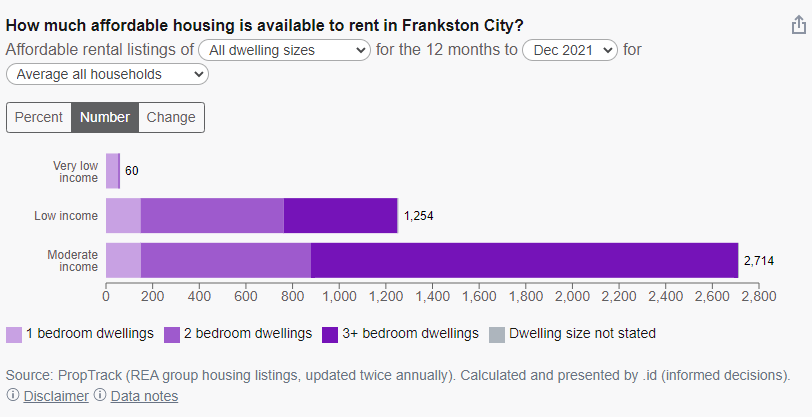In this blog, Georgia shares some of the high level findings of Anglicare Australia’s annual Rental Affordability Snapshot. It’s not a fantastic picture for our most vulnerable communities, so she also shares how Councils can access data that gives a wider view of the supply of affordable rentals in their area.
Already know that affordable housing supply is an issue in your area? Book a meeting with our housing consultants to learn more about how the data in housing.id could assist your Council.
A few weeks ago, Anglicare Australia released their annual Rental Affordability Snapshot. The headline figures come as no surprise to anyone following rental affordability in recent years – there were just a handful of rental properties that were affordable to some of Australia’s most vulnerable population groups.
The report looks at all the rental listings that were available over a specified weekend – 19 March this year – and assesses them on the affordability for a variety of household types on Centrelink payments or the minimum wage. This year, the report found that of the 45,992 listings across Australia:
- 7 listings (0%) were affordable for a single person on the JobSeeker payment
- 663 listings (1.4%) were affordable for a couple on the Aged Pension
- 7,041 listings (15.3%) were affordable to a couple with children, both earning minimum wage (and Family Tax Benefit A)
A pretty bleak picture! However, this type of data is really valuable in highlighting the extent of the affordability crisis in Australia, and for advocating for more social and affordable housing.
In fact we need more data like this. While the Anglicare report is a great start – it only looks at the listings that were available over one weekend. What if this weekend was a ‘slow’ one for rental listings? If someone was looking for a rental property, they would most likely be looking for a few weeks or months even. This type of data with a longer time period would give a more realistic view of the supply of affordable rentals.
The Anglicare report also offered some insight at a regional level, based on their operating regions. These are quite broad, in some cases a whole state, but give some idea of the spatial distribution of affordable housing supply. For example, the 7 properties that were affordable for a single person on the JobSeeker payment were found in the Central West, Far West & Orana and Illawarra regions of NSW, metropolitan Brisbane and Northern Tasmania.
.id are in a really privileged position, along with our partners PropTrack, to assist Councils in gaining access to this data, at a Local Government and suburb level geography. As part of housing.id, Councils get access to data outlining the number of affordable rentals that would have been available for low income households over the past year. Better yet, this data is updated every six months, to give a rolling picture of the changing affordability landscape.
The example below is for Frankston City Council. During 2021, there were 60 properties listed for rent that would have been affordable to a household on a very low income – which correlates well to Government support payments. And with a new feature we’ve just added, you can also gain an insight on the size of the property. Of the 60 that were affordable, 52 (87%) were one bedroom properties. This might be suitable for smaller household types, but may not be appropriate for families (more on this in another blog!).

This data can be really powerful, especially for Council’s advocacy work. If you’d like to find out more about this type of data, and how it could assist you in supporting affordable housing provision you can book a meeting with our housing consultants to discuss the needs of your area.







